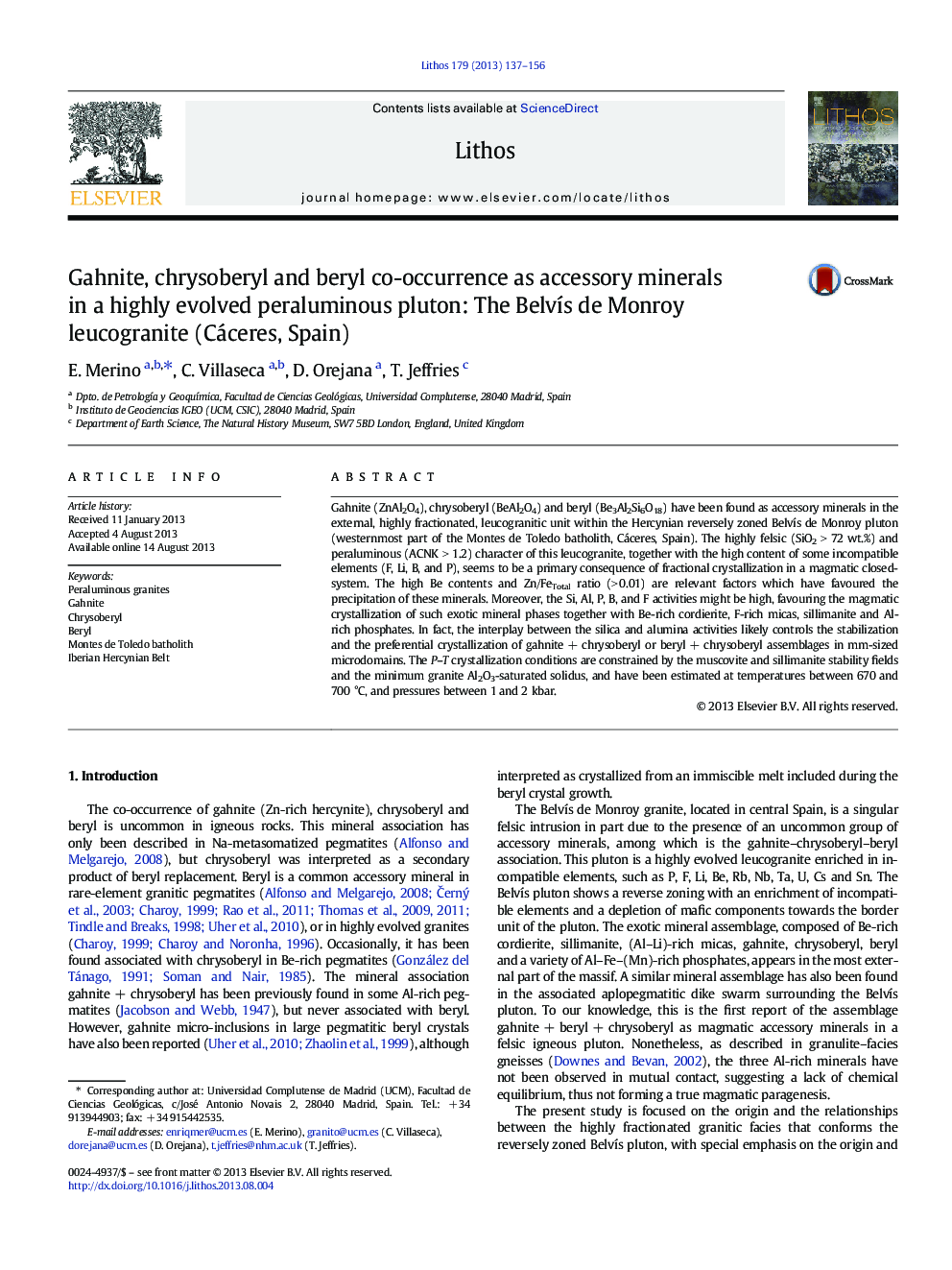| Article ID | Journal | Published Year | Pages | File Type |
|---|---|---|---|---|
| 4716209 | Lithos | 2013 | 20 Pages |
•First report of gahnite, chrysoberyl and beryl assemblages in a leucogranite.•Gahnite composition enlarges previous igneous field (higher hercynite molecule).•Silica and alumina activities control the stability of Be–Zn–Al-rich minerals.•Ghn, Chb or Brl assemblage crystallizes in different chemical microdomains.
Gahnite (ZnAl2O4), chrysoberyl (BeAl2O4) and beryl (Be3Al2Si6O18) have been found as accessory minerals in the external, highly fractionated, leucogranitic unit within the Hercynian reversely zoned Belvís de Monroy pluton (westernmost part of the Montes de Toledo batholith, Cáceres, Spain). The highly felsic (SiO2 > 72 wt.%) and peraluminous (ACNK > 1.2) character of this leucogranite, together with the high content of some incompatible elements (F, Li, B, and P), seems to be a primary consequence of fractional crystallization in a magmatic closed-system. The high Be contents and Zn/FeTotal ratio (> 0.01) are relevant factors which have favoured the precipitation of these minerals. Moreover, the Si, Al, P, B, and F activities might be high, favouring the magmatic crystallization of such exotic mineral phases together with Be-rich cordierite, F-rich micas, sillimanite and Al-rich phosphates. In fact, the interplay between the silica and alumina activities likely controls the stabilization and the preferential crystallization of gahnite + chrysoberyl or beryl + chrysoberyl assemblages in mm-sized microdomains. The P–T crystallization conditions are constrained by the muscovite and sillimanite stability fields and the minimum granite Al2O3-saturated solidus, and have been estimated at temperatures between 670 and 700 °C, and pressures between 1 and 2 kbar.
Graphical abstractFigure optionsDownload full-size imageDownload as PowerPoint slide
